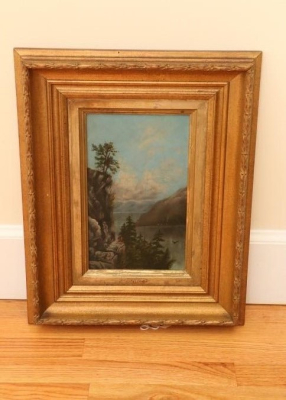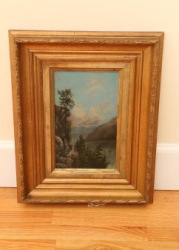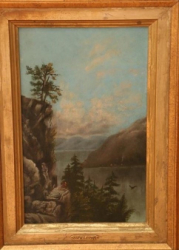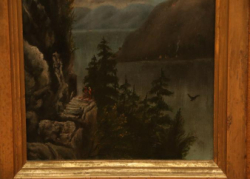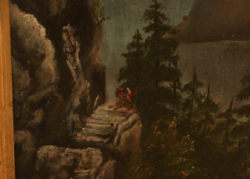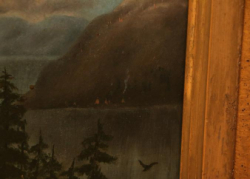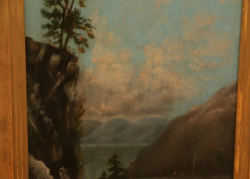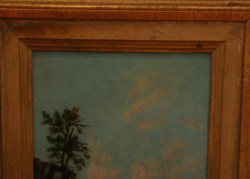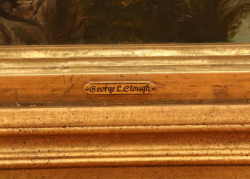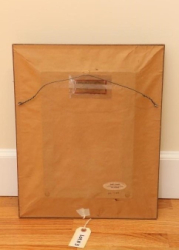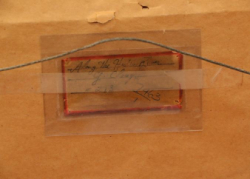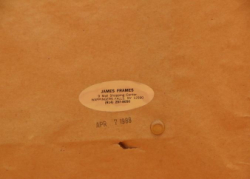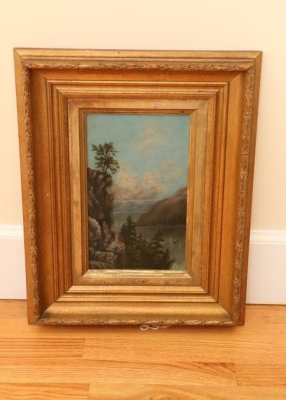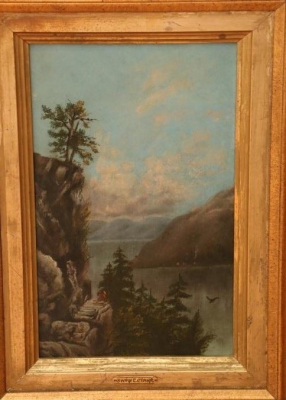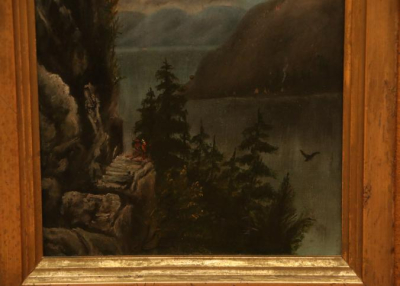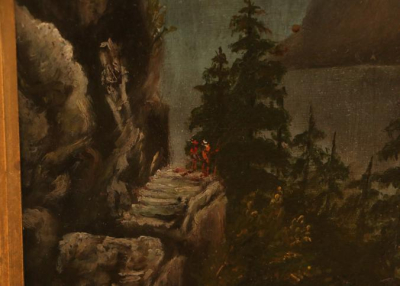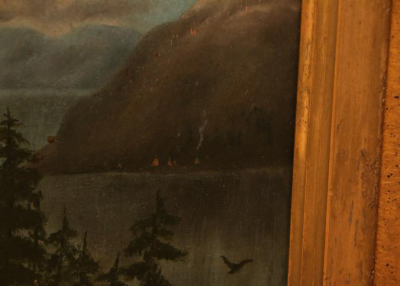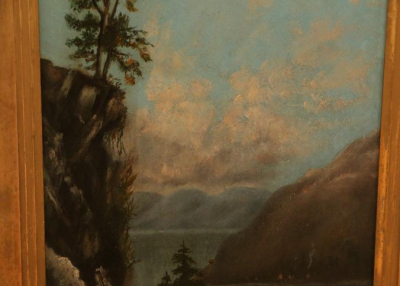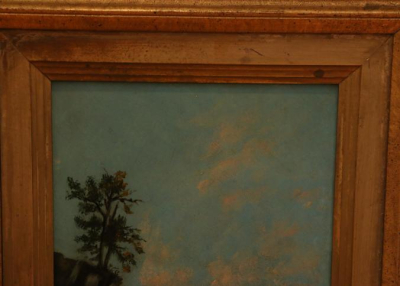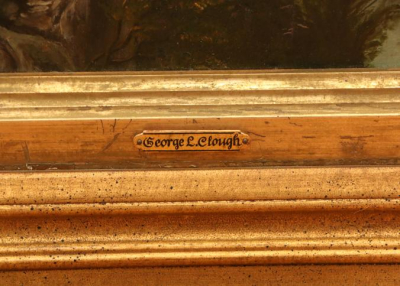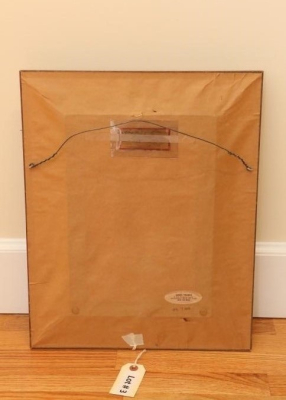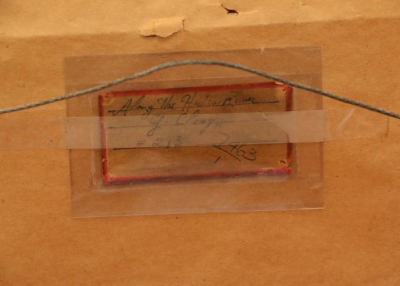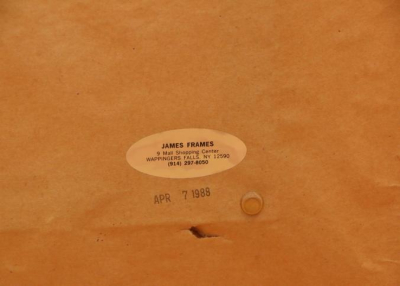Items located in Pleasant Valley, NY. Items include Hudson River School artwork, seascapes and framed lithographs. The Hudson River School of "Nature Painters" were painting from the mid-19ThC to the late 19thC. Although, they were actively painting views all across America, the scenes on the Hudson River are the most sought after. You have a rare opportunity to purchase these great "Views" now in this no-reserve auction. We also encourage you to come see us and preview the auction in-person.
Payment is due by Tuesday, May 23 at 3PM.
Pickup in Pleasant Valley, NY must be completed by Thursday, May 25 at 3PM.
All lots sold as is, where is. There is a 15% Buyers Premium for all lots purchased. Payment methods include cash, PayPal, MC, Visa, Discover or good check. You can make credit card payment online by going to your Member Area and selecting your invoice. To pay by PayPal, send money to info@aarauctions.com.
Payment is due by Tuesday, May 23 at 3PM.
Pickup in Pleasant Valley, NY must be completed by Thursday, May 25 at 3PM.
All lots sold as is, where is. There is a 15% Buyers Premium for all lots purchased. Payment methods include cash, PayPal, MC, Visa, Discover or good check. You can make credit card payment online by going to your Member Area and selecting your invoice. To pay by PayPal, send money to info@aarauctions.com.
Auction Info
Items located in Pleasant Valley, NY. Items include Hudson River School artwork, seascapes and framed lithographs. The Hudson River School of "Nature Painters" were painting from the mid-19ThC to the late 19thC. Although, they were actively painting views all across America, the scenes on the Hudson River are the most sought after. You have a rare opportunity to purchase these great "Views" now in this no-reserve auction. We also encourage you to come see us and preview the auction in-person.
Payment is due by Tuesday, May 23 at 3PM.
Pickup in Pleasant Valley, NY must be completed by Thursday, May 25 at 3PM.
All lots sold as is, where is. There is a 15% Buyers Premium for all lots purchased. Payment methods include cash, PayPal, MC, Visa, Discover or good check. You can make credit card payment online by going to your Member Area and selecting your invoice. To pay by PayPal, send money to info@aarauctions.com.
Payment is due by Tuesday, May 23 at 3PM.
Pickup in Pleasant Valley, NY must be completed by Thursday, May 25 at 3PM.
All lots sold as is, where is. There is a 15% Buyers Premium for all lots purchased. Payment methods include cash, PayPal, MC, Visa, Discover or good check. You can make credit card payment online by going to your Member Area and selecting your invoice. To pay by PayPal, send money to info@aarauctions.com.
Categories:
George Lafayette Clough (1824-1901). View of The Hudson Highlands near Anthony's Nose. Featured in the Exhibition "This Perfect River-View": The Hudson River School and Contemporaries in Private Collections in the Highlands. The exhibit ran from July 20th to November 25, 2007 at the Putnam County Historical Society & Foundry School Museum in Cold Spring, NY. This painting was featured on page 23 of the 67 page catalog for the exhibition. It was also on exhibit at Boscobel historic home in Garrison and still retains original exhibit sticker #6. Bio: George Lafayette Clough was born September 18, 1824, in Auburn, New York, and was that city's leading landscapist and, known as a Hudson River School painter, became Auburn's most noted resident painter of the mid-century. His mother was widowed shortly after his birth, and he was raised without paternal influence. He had little formal education and was employed by the age of ten. By age fifteen he had taken up painting, and his first and informal art influence came from the portraitist, Randall Palmer.
In 1844 Clough opened his own studio in Auburn. About that time Charles Loring Elliott came to Auburn to paint a portrait of William Henry Seward, a local statesman, and chose Clough's studio for that purpose. Elliott became Clough's teacher, and in 1847, he began formal study for several months in Elliott's New York City studio. He returned to Auburn from that experience a competent professional portraitist. Two of his portraits were exhibited at the National Academy of Design the following year. He married and briefly shared a studio in Auburn with Joseph Meeker.
In the early 1850's, he traveled to France, Holland, Italy, and Germany to study. While in each location, Clough would study the local painting traditions and copy some of their works, a common custom of American artists. Upon return to the United States, his efforts concentrated primarily on landscapes. His favorite locales included the Adirondacks, and the woodland areas of upper New York State, Pennsylvania, New England, and Eastern Ohio.
When he moved to Cleveland about 1862, Clough began painting urban views. Spending most of the 1880's in the New York City area, he became involved in the Brooklyn Art Association.
He returned to his hometown of Auburn several years before his death. Sight 11.5x6.5". 11.5" x 6.5" sight, 15" x 10" canvas
More Details
George Lafayette Clough (1824-1901). View of The Hudson Highlands near Anthony's Nose. Featured in the Exhibition "This Perfect River-View": The Hudson River School and Contemporaries in Private Collections in the Highlands. The exhibit ran from July 20th to November 25, 2007 at the Putnam County Historical Society & Foundry School Museum in Cold Spring, NY. This painting was featured on page 23 of the 67 page catalog for the exhibition. It was also on exhibit at Boscobel historic home in Garrison and still retains original exhibit sticker #6. Bio: George Lafayette Clough was born September 18, 1824, in Auburn, New York, and was that city's leading landscapist and, known as a Hudson River School painter, became Auburn's most noted resident painter of the mid-century. His mother was widowed shortly after his birth, and he was raised without paternal influence. He had little formal education and was employed by the age of ten. By age fifteen he had taken up painting, and his first and informal art influence came from the portraitist, Randall Palmer.
In 1844 Clough opened his own studio in Auburn. About that time Charles Loring Elliott came to Auburn to paint a portrait of William Henry Seward, a local statesman, and chose Clough's studio for that purpose. Elliott became Clough's teacher, and in 1847, he began formal study for several months in Elliott's New York City studio. He returned to Auburn from that experience a competent professional portraitist. Two of his portraits were exhibited at the National Academy of Design the following year. He married and briefly shared a studio in Auburn with Joseph Meeker.
In the early 1850's, he traveled to France, Holland, Italy, and Germany to study. While in each location, Clough would study the local painting traditions and copy some of their works, a common custom of American artists. Upon return to the United States, his efforts concentrated primarily on landscapes. His favorite locales included the Adirondacks, and the woodland areas of upper New York State, Pennsylvania, New England, and Eastern Ohio.
When he moved to Cleveland about 1862, Clough began painting urban views. Spending most of the 1880's in the New York City area, he became involved in the Brooklyn Art Association.
He returned to his hometown of Auburn several years before his death. Sight 11.5x6.5". 11.5" x 6.5" sight, 15" x 10" canvas
High Bid:
$1,150.00 – b68
Auction Type: One Lot
Quantity: 1
Bidding has closed on this lot

